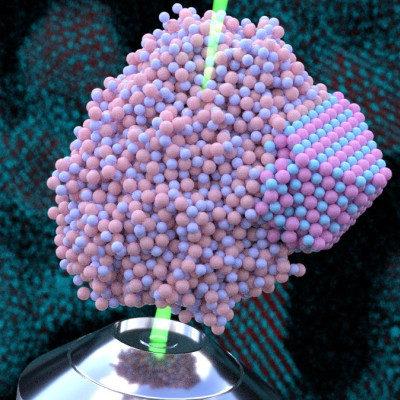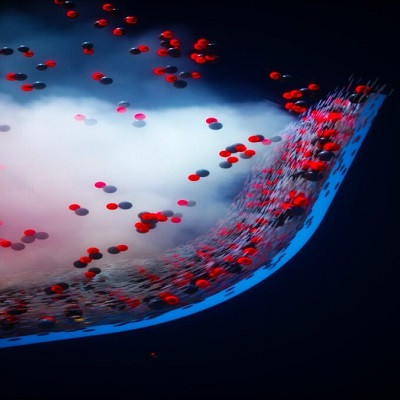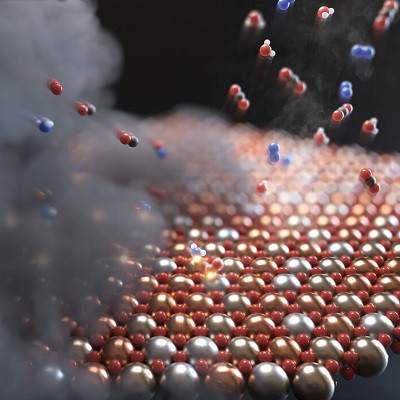Soot only persists in the atmosphere for a few weeks, suggesting that if these emissions could be stopped then the air could rapidly clear. This has recently been demonstrated during recent lockdowns, with some major cities reporting clear skies after industrial emissions stopped.
But soot is also part of our future. Soot can be converted into the useful carbon black product through thermal treatment to remove any harmful components. Carbon blacks are critical ingredients in batteries, tyres and paint. If these carbons are made small enough they can even be made to fluoresce and have been used for tagging biological molecules, in catalysts and even in solar cells.
Given the importance of soot and how long humankind has been producing it, you would think its formation was completely understood. However, this is not the case. In particular, the critical transition when the molecules cluster to form the very first nanoparticles of soot is unknown.
If the origins of soot were to be entirely understood, we could potentially eliminate its formation and therefore drastically reduce its environmental impact as well as make better carbon materials. With this in mind, researchers from the University of Cambridge and the Cambridge CARES centre have recently published a comprehensive review on the birth of soot – where molecules become particles.
In the review, titled: “Soot inception: Carbonaceous nanoparticle formation in flames” published in Progress in Energy and Combustion Science, the authors Dr Jacob Martin, Dr Maurin Salamanca and CARES Director Professor Markus Kraft begin by noting that;
“It has only been in the last decade, however, that experimental and computational techniques in combustion science have been able to peek behind the door to reveal insights into the earliest formation mechanisms of carbonaceous particulates in the flame.”
The figure below shows some of these new experimental insights along the path from fuel to soot. In this diagram it is nanoparticle formation (soot inception) that is the birth of the soot particle.
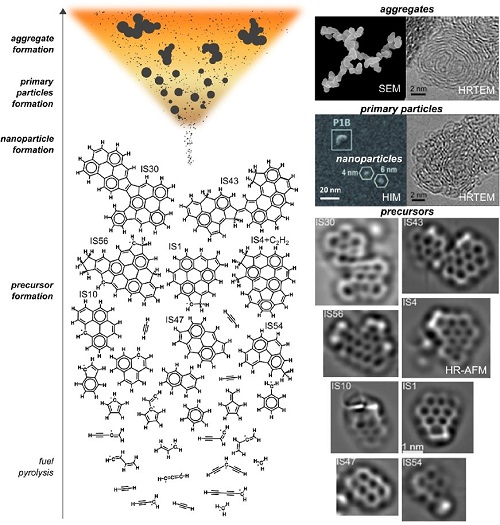
The graphical abstract from the review.
wo main pathways have been suggested for soot inception – either physical condensation in which molecules form droplets or chemical polymerisation in which molecules react to form particles. But either pathway by itself is non-optimal, as “physical and electrical condensation of precursor molecules is rapid but too weak to hold soot together, while most chemical bonds are strong but the mechanisms proposed to date are too slow to account for rapid growth of soot as observed in experiments.”
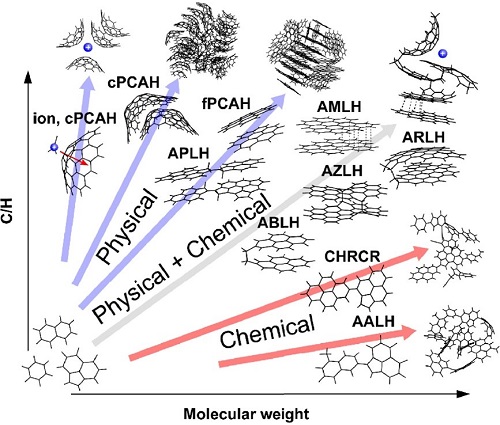
Schematic of various soot nanoparticles arranged as a function of their C/H ratio and molecular weight.
Instead the authors suggest a “middle way” involving mechanisms with both physical and chemical aspects. Promising options are highlighted involving π-radicals and diradicals, however, conclusive evidence for a specific mechanism as well as predictive models are still lacking.
Ultimately, the authors conclude that “the emission of carbonaceous nanoparticles needs to be a research and industrial priority for the future of combustion devices and new material applications.”
Read the original article on Cambridge Centre for Advanced Research and Education in Singapore (CARES).


